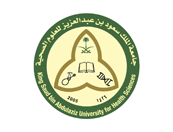Abstract
Purpose: Residents suffer from high workload and extended working hours, which have several negative consequences on their mental health and patients' safety. Similarly, time pressure, which is also part of the clinical training of medical residents, may have adverse effects on their performance. The aim of this study was to explore internal medicine residents’ perceptions of time pressure sources in the workplace, its negative effects on them and their patients and finally what strategies they adopt to cope with them. Method: This was a focus group qualitative study. Seventeen internal medicine residents from all four years of the residency training were recruited. A semi-structured interview approach was used, and data were analyzed using thematic analysis. Results: Participants perceived their work as stressful and very demanding. Four major themes emerged to explain the sources of time pressure in the workplace: patient-related factors; practice-related factors; training-related factors; and resident-related factors. In addition, two main themes arose to show the negative effects of time pressure on residents: the effects on residents' health and the effects on residents’ performance. Data also showed two main coping strategies, which can be summarized as: active adaptive coping and avoidant maladaptive coping. Discussion: This in depth-qualitative study highlights the sources and consequences of perceived time pressure in clinical training of internal medicine residents. Residents feel this adverse working condition could have substantial adverse effects on their health and performance. © 2020 King Saud bin Abdulaziz University for Health Sciences
Recommended Citation
ALQahtani, Dalal A.; Mahzari, Moeber M.; ALQahtani, Alanoud A.; and Rotgans, Jerome I.
(2020)
"Time Pressure Experienced by Internal Medicine Residents in an Educational Hospital in Saudi Arabia: A Qualitative Study,"
Health Professions Education: Vol. 6:
Iss.
3, Article 12.
DOI: 10.1016/j.hpe.2020.05.005
Available at:
https://hpe.researchcommons.org/journal/vol6/iss3/12



